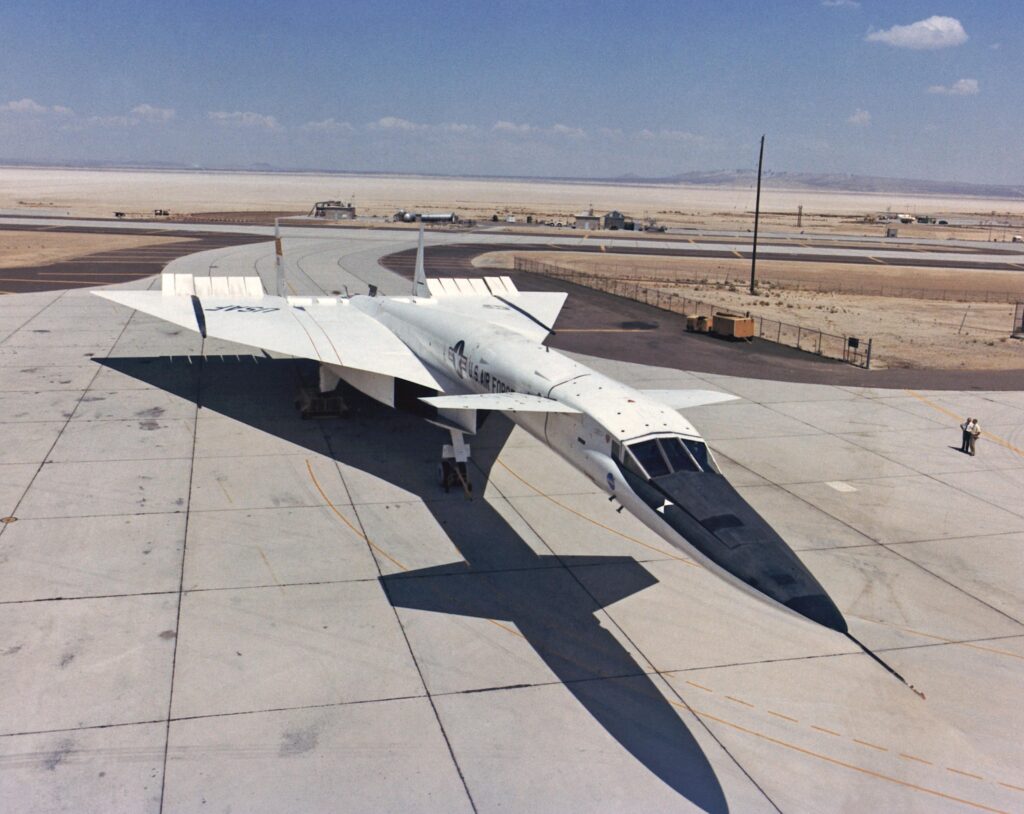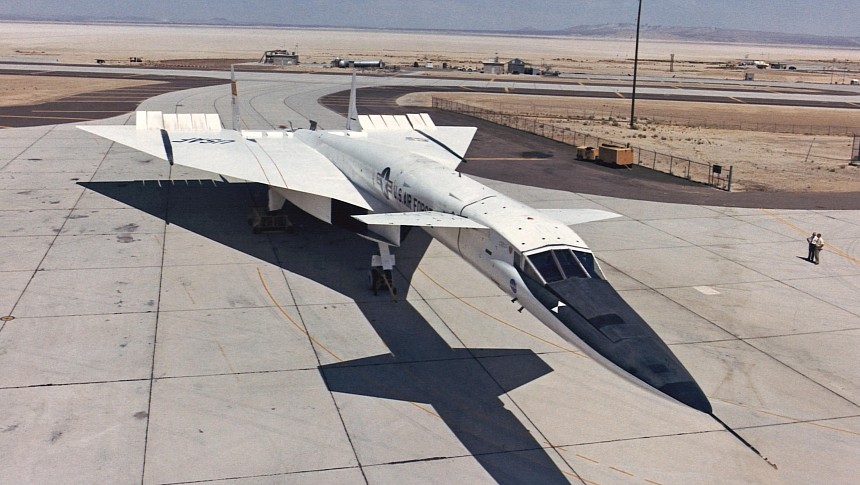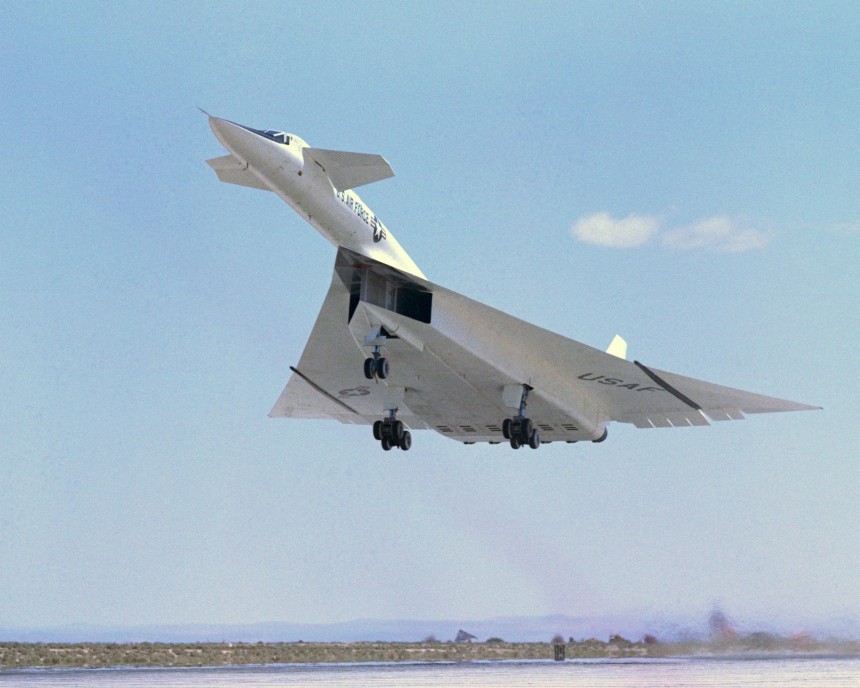

Just how fast was the XB-70?
A stunning delta wing shape with a canard surface created an eye-catching design. The designers at North American would utilize compression lift, which resulted from a shock wave generated over the leading edge of the engine intake splitter. The XB-70 helped redirect the shockwaves and generate additional lift. This would allow the bomber to fly more efficiently at supersonic speeds. Powering the aircraft were six General Electric YJ93 afterburning turbojets. These propelled the futuristic bomber to a speed of 2,056 mph, or Mach 3.1, making it by far the fastest bomber in the world.The XB-70 was able to outrun the fastest fighter jets of the day. And the engines were so powerful that the aircraft could remain at Mach 3, even if one of them failed. The variable geometry wings helped to improve both the aircraft’s stability and its supersonic lift. The innovative construction of the aircraft was based on a revolutionary, multi-layer fuselage skin. Fuel would also circulate throughout the airframe to cool the interior. This was all to counter the kinetic heat the aircraft would go through. On the face of it, the XB-70 was a world-beater.
Test flights stymied the progress of the XB-70 program

The first flight of the XB-70 took place in September 1974. It happened after many technical problems that had delayed the first flight. And that wasn’t the end of the issues. A brake would lock on that first landing, causing a tire to blow out and catch fire. Then the faster the aircraft flew, the worse the paint would peel off its bodywork. The biggest scare came on the 12th flight, as the horizontal splitter tore off and was sucked into the engines, knocking out four of them. And it happened as the jet approached Mach 2.6.The XB-70 shed a part of its leading edge when the aircraft returned to flight, and the first prototype was then limited to just Mach 2.5. The second aircraft was cleared to fly at Mach 3. But the XB-70 had to fight all these issues while the Soviet missile technology was rapidly improving. Surface-to-air missiles now represented a massive threat to American bombers. Even one as fast as the XB-70. The Missiles would also be able to go higher than the XB-70s maximum height of 77,350 ft. Intercontinental nuclear ballistic missiles also took away the nuclear bomber role for the jet.
The U.S. Air Force dramatically scaled back the XB-70 program
Even switching the XB-70 to a low-level bombing role wouldn’t help. The aircraft was found to have very little performance advantage over the B-52, the very aircraft it was supposed to replace. As such, the U.S. Air Force decided that enough was enough. The program was scaled back massively, and the XB-70s were then used for supersonic research rather than as prototypes for a new bomber. Tragedy then struck the U.S. Air Force and NASA program. The second prototype was lost during a photoshoot for General Electric after an F-104 Starfighter rolled into the aircraft.F-104 pilot Joe Walker was killed, as was XB-70 co-pilot Carl Cross. The bomber’s pilot, Al White, was seriously injured during ejection, but he survived the accident and made a recovery. The loss was a devastating setback to the research program, leaving the team with the Mach 2.6 limited prototype.
The XB-70 program ended in tragic failure

The accident occurred in 1966, and the XB-70 would go on to fly until 1969. Ironically, the B-70 bomber program was canceled even before the aircraft first flew back in 1961.It wasn’t that exact crash that ended things, though. Advances in missile technology rendered the role of the XB-70 obsolete before the first prototype had lifted off the ground. The aircraft was always set to fail. Yet amazingly, the B-52 it was meant to replace has continued in the bomber role ever since and will do so for many more years to come. That is perhaps the ultimate irony in the story of the XB-70.